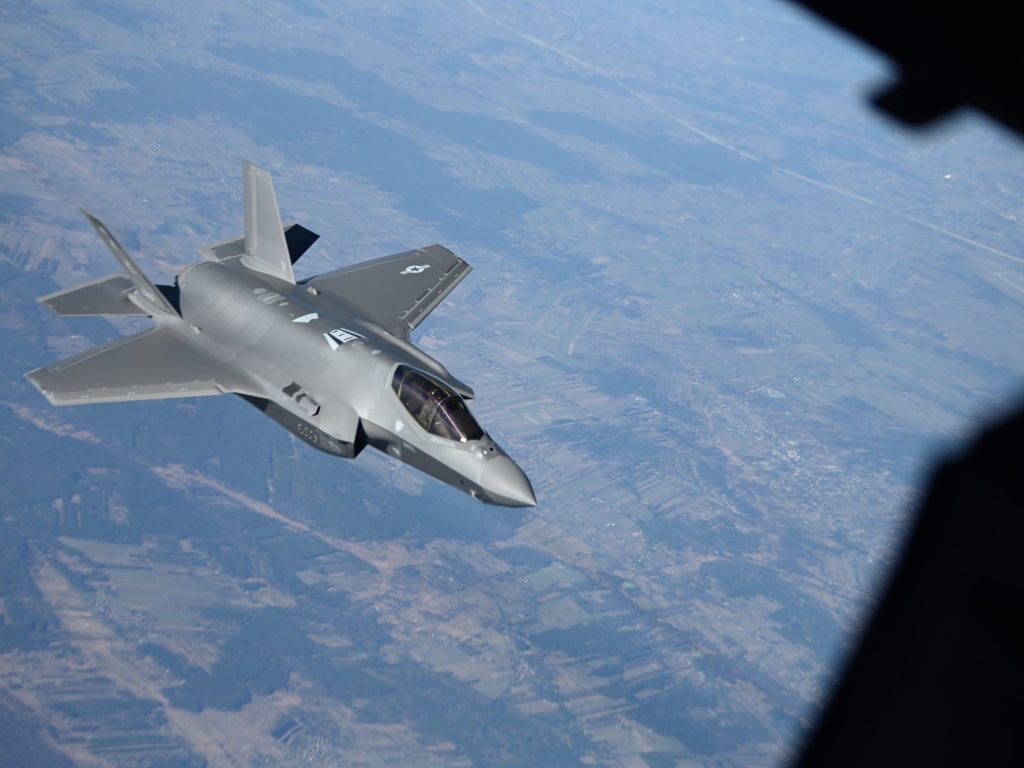- The US Air Force says it has grounded its F-35 fleet due to a faulty part in its ejection seat
- The Navy, as well as the Air Force's Education Training Command, also grounded a number of planes for the same issue.
- The affected aircraft include not only the F-35, but the F/A-18 Hornet and Super Hornet, E/A-18G Growler, T-45 Goshawk and a number of training aircraft.
The US Air Force says it has grounded its F-35 Joint Strike Fighter fleet due to concerns over ejection seat safety, just days after the Navy said it had grounded an undisclosed number of planes for the same reason.
The F-35s began a stand-down today to "expedite the inspection process" of the ejection seats, an Air Combat Command spokesperson told Breaking Defense. The Air Force said in September 2021 it had 302 F-35 stealth fighters — the second-largest fighter fleet behind the F-16 Fighting Falcon.
The Air Force has also grounded 203 trainer aircraft that may be affected by the defective ejection seat parts, according to a report from Air Force Times. The number represents 40% of the Air Education and Training Command's T-38 Talon fleet and 15% of its T-6 Texan II fleet at undergraduate pilot training bases as well as Naval Air Station Pensacola.
The Navy also said it has grounded an undisclosed number of its aircraft, a Navy spokesperson told Breaking Defense while withholding the specific number for operational security reasons.
The defect discovered did not affect all of the aircraft in the Navy and Marines inventory. Instead, the problem was contained to those planes within "a limited range of lot numbers," according to Naval Air Systems Command. The Air Force said the defect is also only affecting certain production lots of the Martin-Baker seats.
The ejection seats manufacturer, Martin-Baker, first identified the potential defect in the cartridge actuated devices, which are involved in the deployment of the parachute when pilots pull the ejection handle. The problem has affected some of the military's most advanced fighter jets including the F-35, the F/A-18E/F Super Hornets, E/A-18G Growlers, as well as trainers like the T-45 Goshawks, F-5 Tiger II, T-38 Talons and 76 T-6 Texan IIs training aircrafts.
The Navy said the manufacturer used "validated radiography procedures to scan on-hand inventory to verify each item was properly manufactured" before sending out replacement parts. The Navy's Naval Surface Warfare Center Indian Head Division began sending cleared replacement parts to fleet maintenance centers on July 24.
Maj. Gen. Craig Wills, 19th Air Force Commander, told Breaking Defens that the affected aircraft in the training fleet won't start flying until the service is "confident" the ejection seats are working.
"Our primary concern is the safety of our airmen and it is imperative that they have confidence in our equipment," he said in a statement. "Our actions today were taken out of an abundance of caution in order to ensure the safety of our pilots and aircrew."
